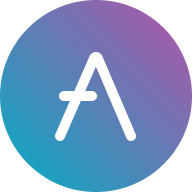Aave Loan Interest Explained: How It Works and What You Need to Know
What Is Aave and How Does It Work?
Aave is a leading decentralized finance (DeFi) protocol that enables users to lend and borrow cryptocurrencies without relying on traditional financial intermediaries. Originally launched in 2017 as ETHLend by Stani Kulechov, the platform rebranded to Aave in 2018. The name "Aave," meaning "ghost" in Finnish, reflects its vision of creating a transparent and seamless financial ecosystem.
Operating across multiple blockchain networks, including Ethereum, Avalanche, Polygon, Fantom, and Arbitrum, Aave is renowned for its interoperability and innovative features. The platform utilizes liquidity pools where lenders deposit their assets to earn interest, while borrowers provide over-collateralized assets to secure loans. Smart contracts power this system, ensuring transparency and eliminating the need for intermediaries.
How Aave Loan Interest Works
Aave loan interest rates are determined algorithmically based on supply and demand dynamics. When demand for borrowing a specific asset increases, the interest rates for that asset rise. Conversely, when there is an abundance of supply in the liquidity pool, interest rates decrease.
Borrowers on Aave can choose between two types of interest rates:
Stable Interest Rate: This rate remains relatively constant over time, offering predictability and stability for users who prefer consistent repayment plans.
Variable Interest Rate: This rate fluctuates based on market conditions, often providing lower rates during periods of low demand.
Lenders earn interest on their deposited assets, with returns varying depending on the utilization rate of the liquidity pool. For example, high utilization rates for stablecoins like USDT and USDC can lead to borrowing interest rates exceeding 20%, reflecting strong demand.
Key Features of Aave
Flash Loans
Aave introduced flash loans, a groundbreaking feature in the DeFi space. These are uncollateralized loans that must be repaid within the same transaction block. Flash loans are primarily used for advanced DeFi strategies, such as:
Arbitrage opportunities
Collateral swaps
Debt refinancing
While flash loans offer significant opportunities, they require technical expertise to execute effectively.
Aave V3 Enhancements
Aave V3 brought several innovative features to the platform, including:
Cross-Chain Liquidity (Portal): Users can transfer liquidity seamlessly across supported blockchain networks, improving capital efficiency.
Efficiency Mode (eMode): Designed for correlated assets, eMode allows users to borrow more against their collateral by optimizing risk parameters.
GHO Stablecoin: Aave's native stablecoin, GHO, is over-collateralized and pegged to the US dollar, providing a stable borrowing option for users.
Multi-Chain Functionality
Aave supports multiple blockchain networks, making it a versatile platform for users with diverse portfolios. This multi-chain approach enhances accessibility and reduces congestion on any single network.
The Role of the AAVE Token
The AAVE token is integral to the platform's ecosystem, offering several utilities:
Governance: AAVE token holders participate in decentralized governance through the Aave DAO, voting on protocol upgrades and changes.
Staking: Users can stake AAVE tokens to earn rewards and contribute to the platform's security.
Fee Reductions: Borrowers can enjoy reduced fees by using AAVE tokens.
Security Measures on Aave
Aave prioritizes security through:
Regular Audits: The platform undergoes frequent audits to identify and address vulnerabilities.
Bug Bounty Programs: Aave incentivizes developers to report potential issues by offering rewards.
Decentralized Oracles: Trusted oracle networks like Chainlink provide accurate and tamper-proof price feeds.
Risks Associated with Aave
While Aave offers numerous benefits, users should be aware of potential risks, including:
Liquidation Risk: Borrowers must maintain their collateral above a certain threshold. If the collateral value drops below this level, it may be liquidated.
Smart Contract Vulnerabilities: Despite rigorous security measures, no smart contract is entirely immune to exploits.
Market Volatility: Fluctuations in cryptocurrency prices can impact both lenders and borrowers.
Aave's Market Performance and TVL
As of mid-2024, Aave boasts a total value locked (TVL) exceeding $11 billion, solidifying its position as a dominant player in the DeFi lending market. The platform's high utilization rates for stablecoins highlight its strong demand and efficiency.
Decentralized Governance Through the Aave DAO
Aave's governance is community-driven, with AAVE token holders playing a crucial role in shaping the platform's future. Proposals for protocol changes are submitted and voted on through the Aave DAO, ensuring a decentralized and transparent decision-making process.
Conclusion
Aave has revolutionized the DeFi lending space with its innovative features, robust security measures, and user-centric approach. By understanding how Aave loan interest works and leveraging its unique offerings, users can make informed decisions to maximize their participation in the DeFi ecosystem. However, as with any financial platform, it is essential to assess the associated risks and stay informed about market conditions.
© 2025 OKX. This article may be reproduced or distributed in its entirety, or excerpts of 100 words or less of this article may be used, provided such use is non-commercial. Any reproduction or distribution of the entire article must also prominently state: “This article is © 2025 OKX and is used with permission.” Permitted excerpts must cite to the name of the article and include attribution, for example “Article Name, [author name if applicable], © 2025 OKX.” Some content may be generated or assisted by artificial intelligence (AI) tools. No derivative works or other uses of this article are permitted.



